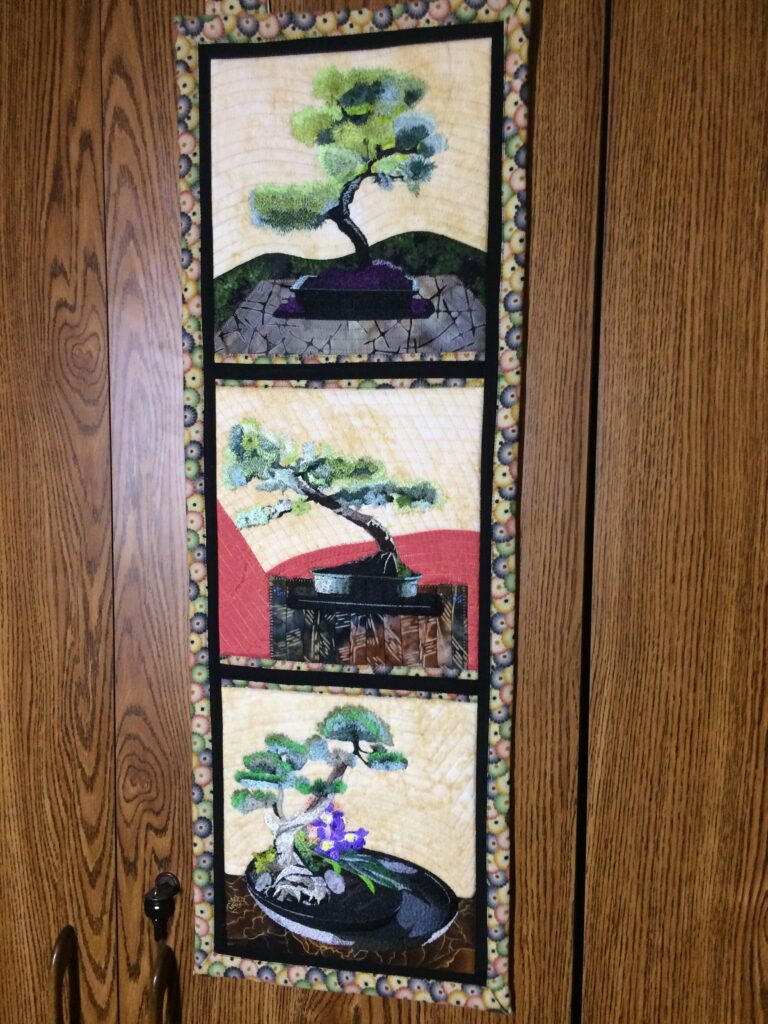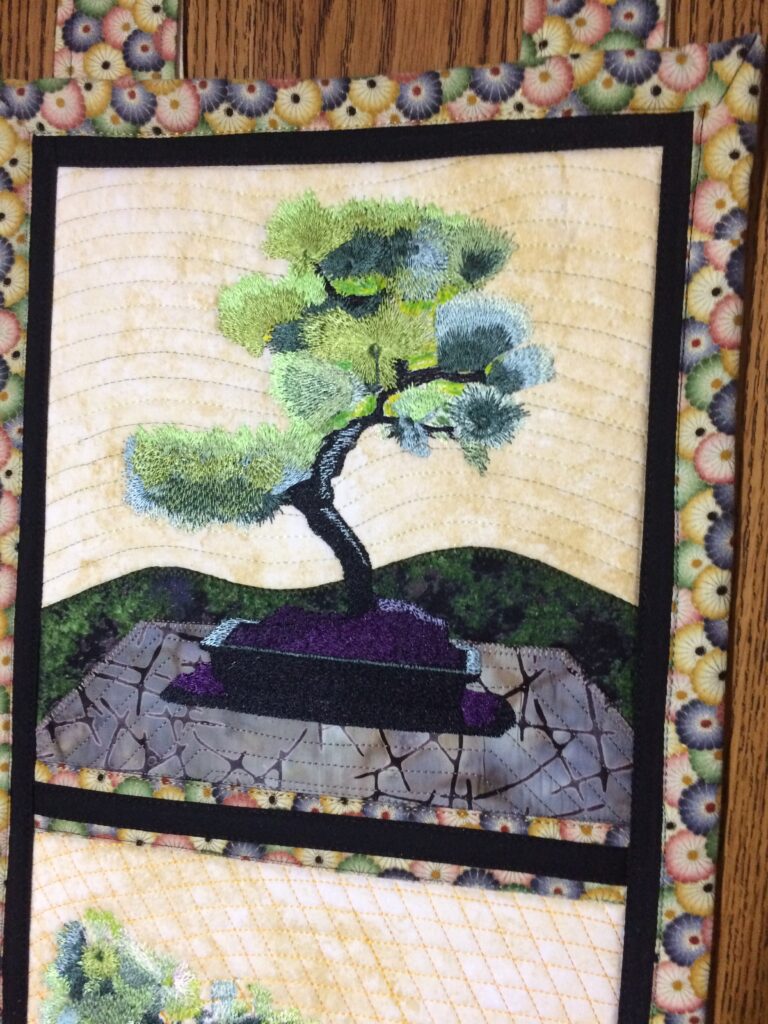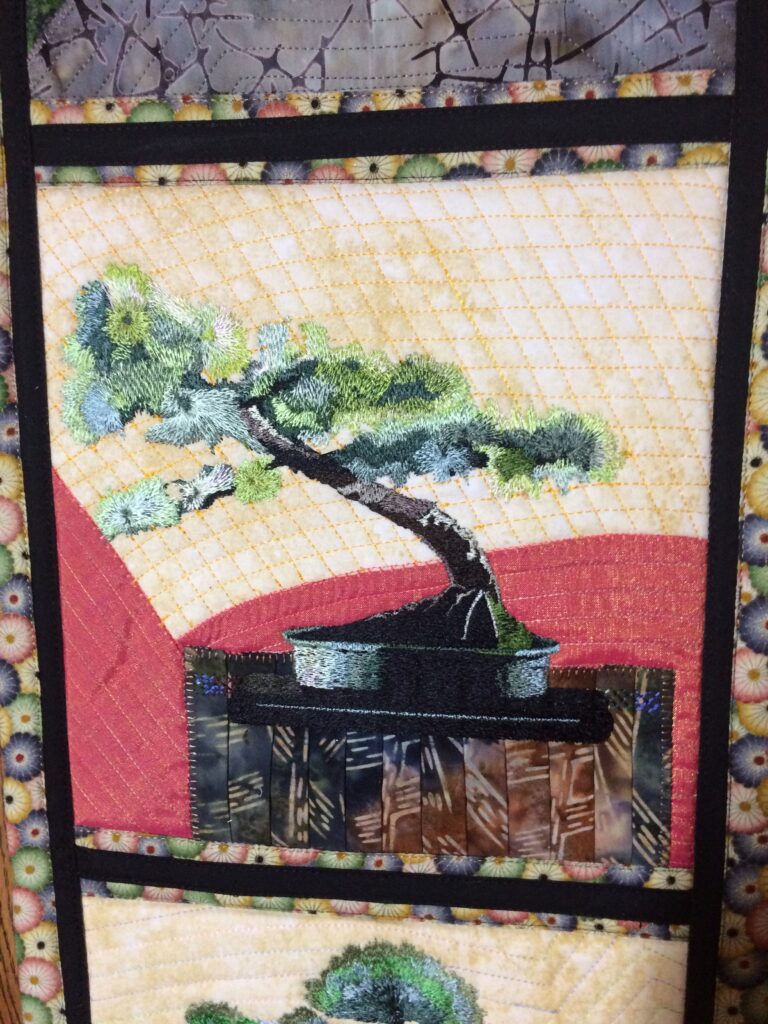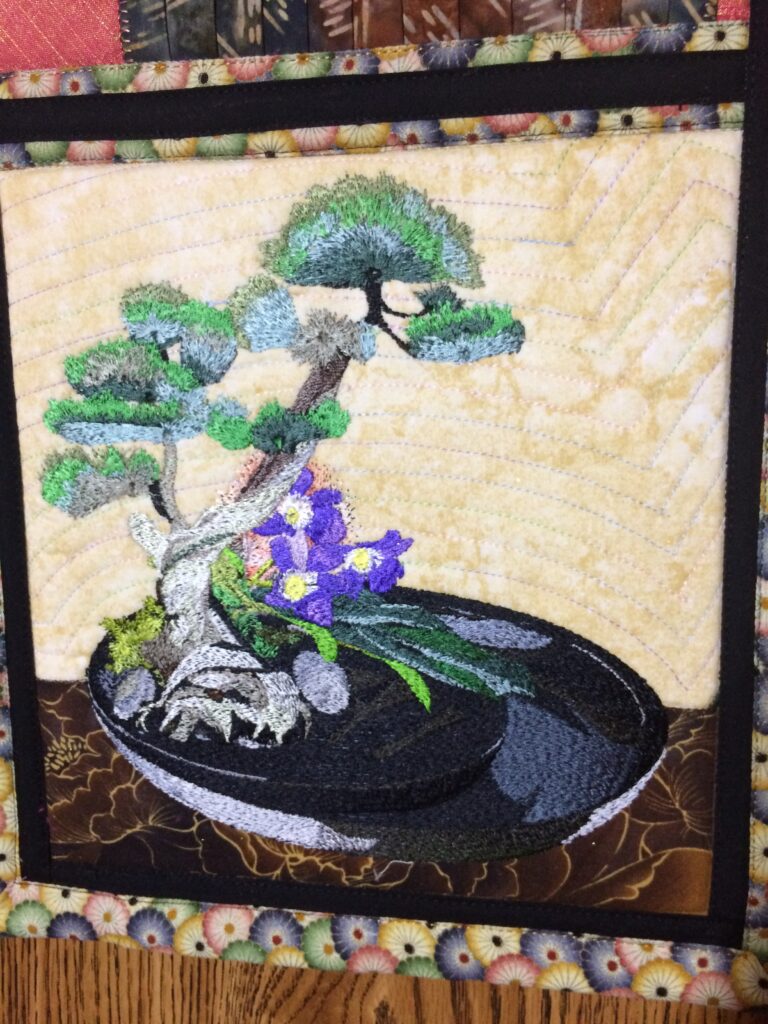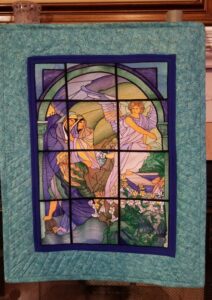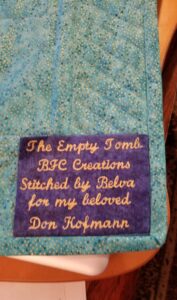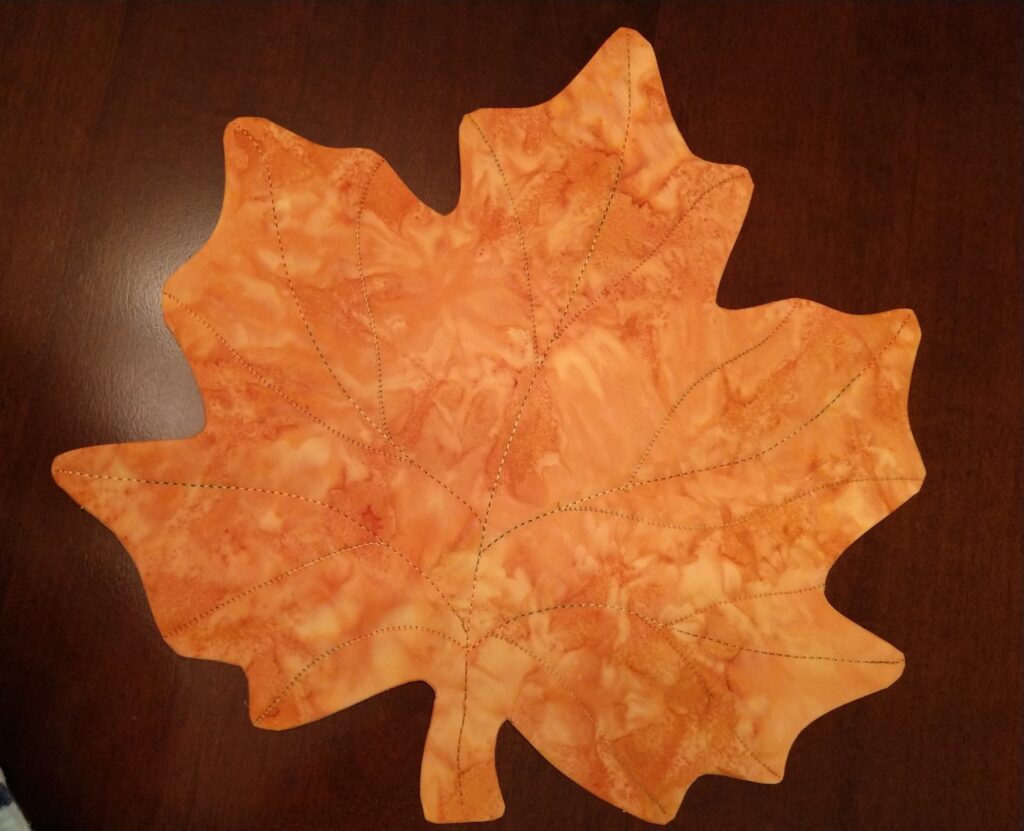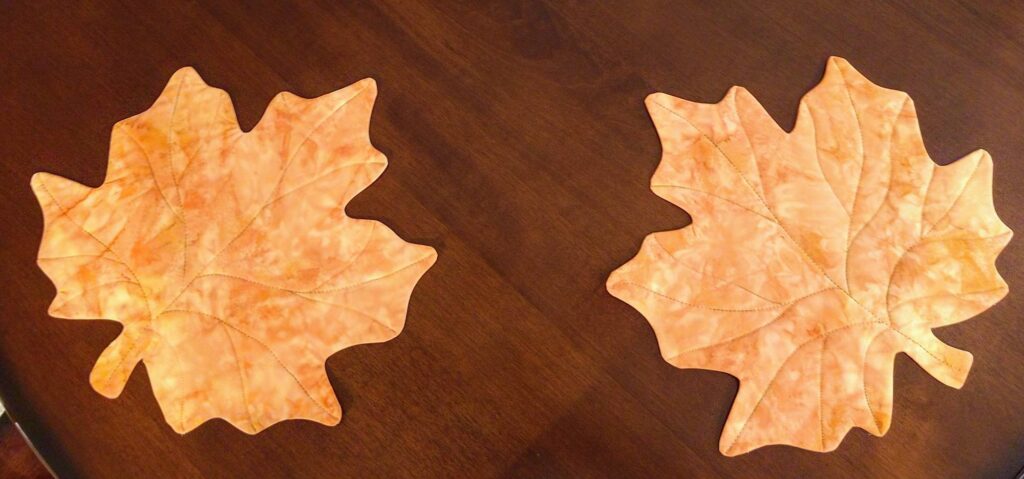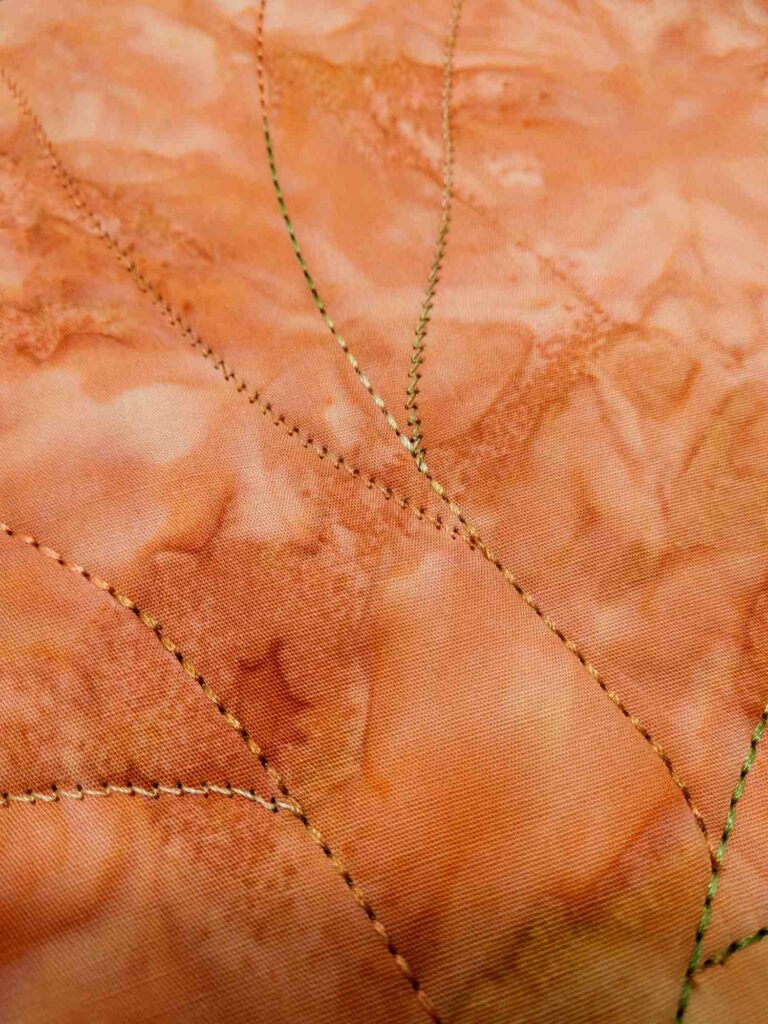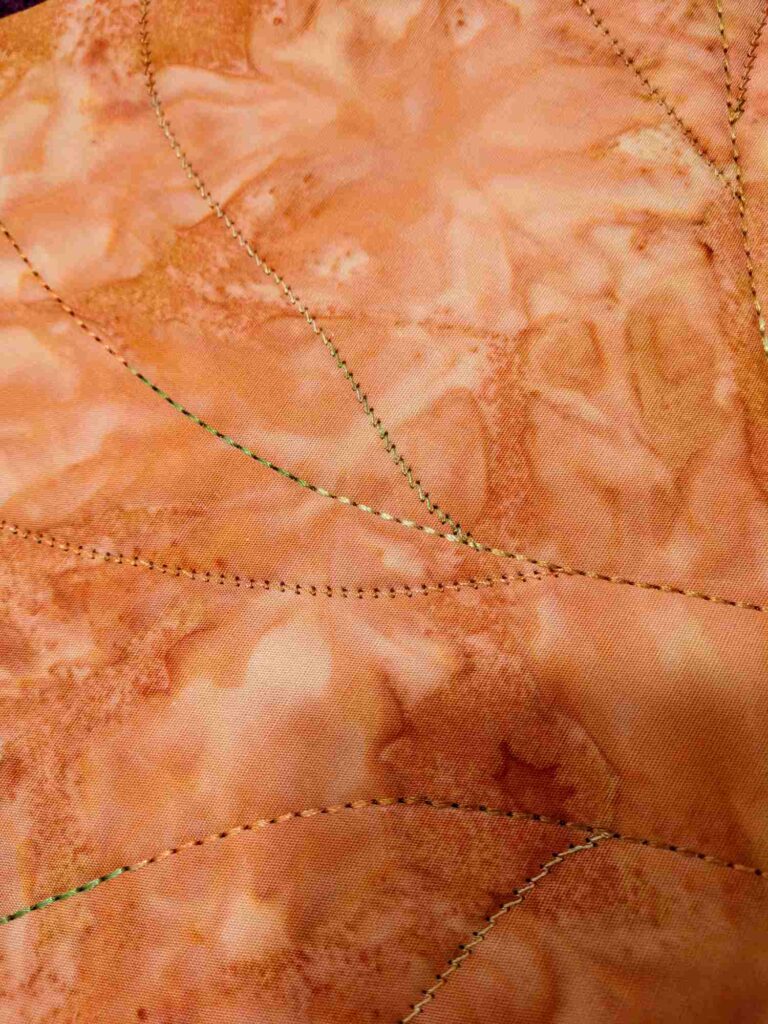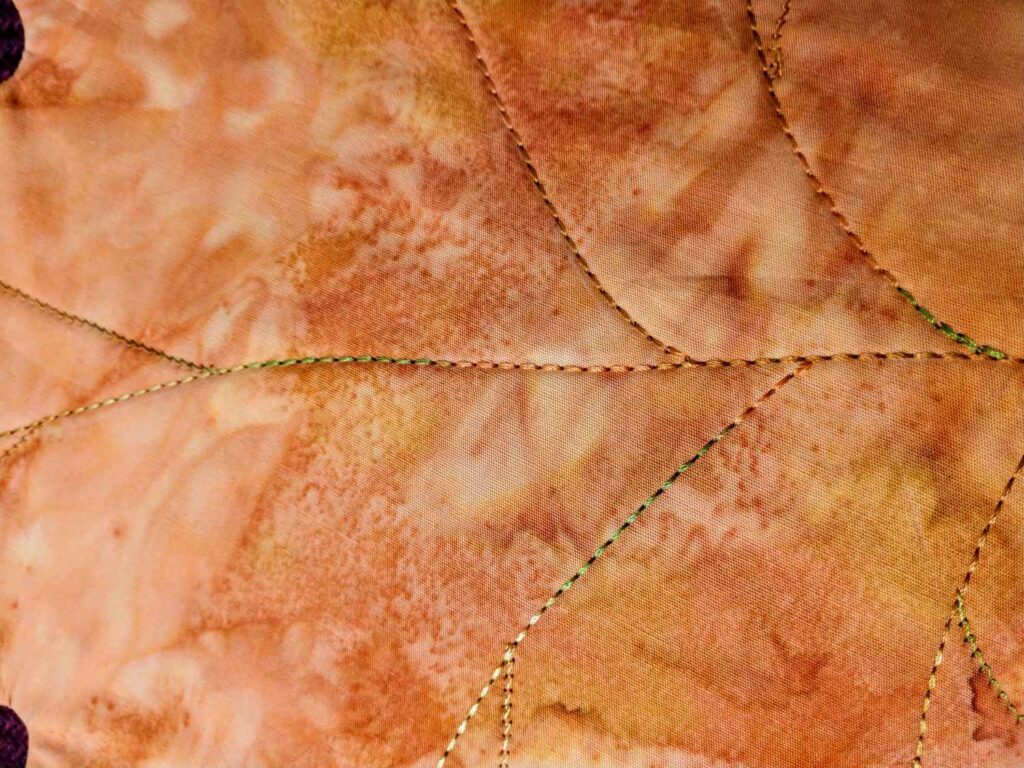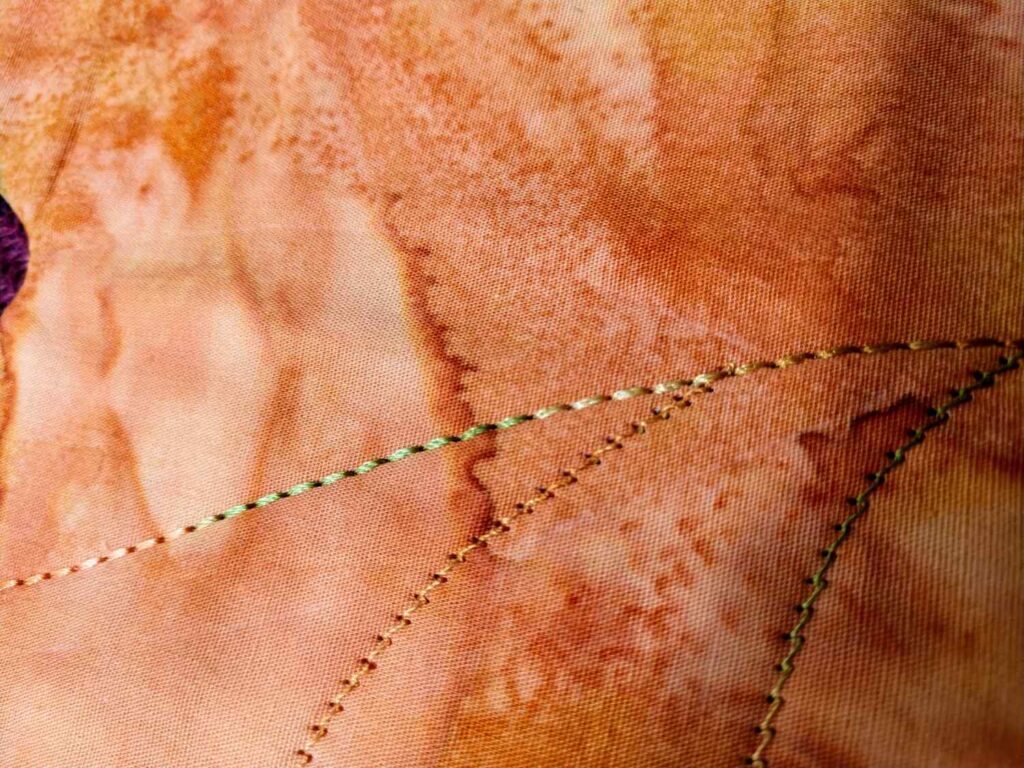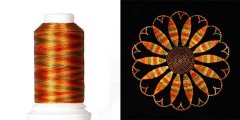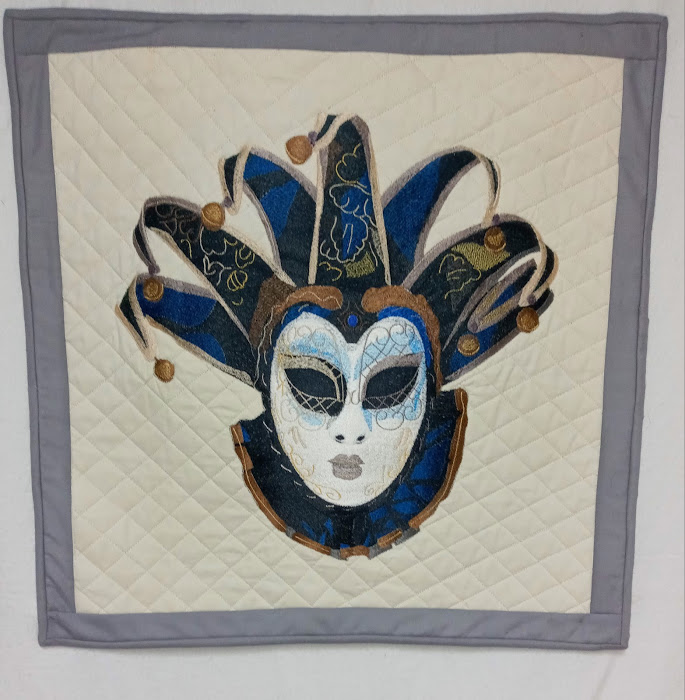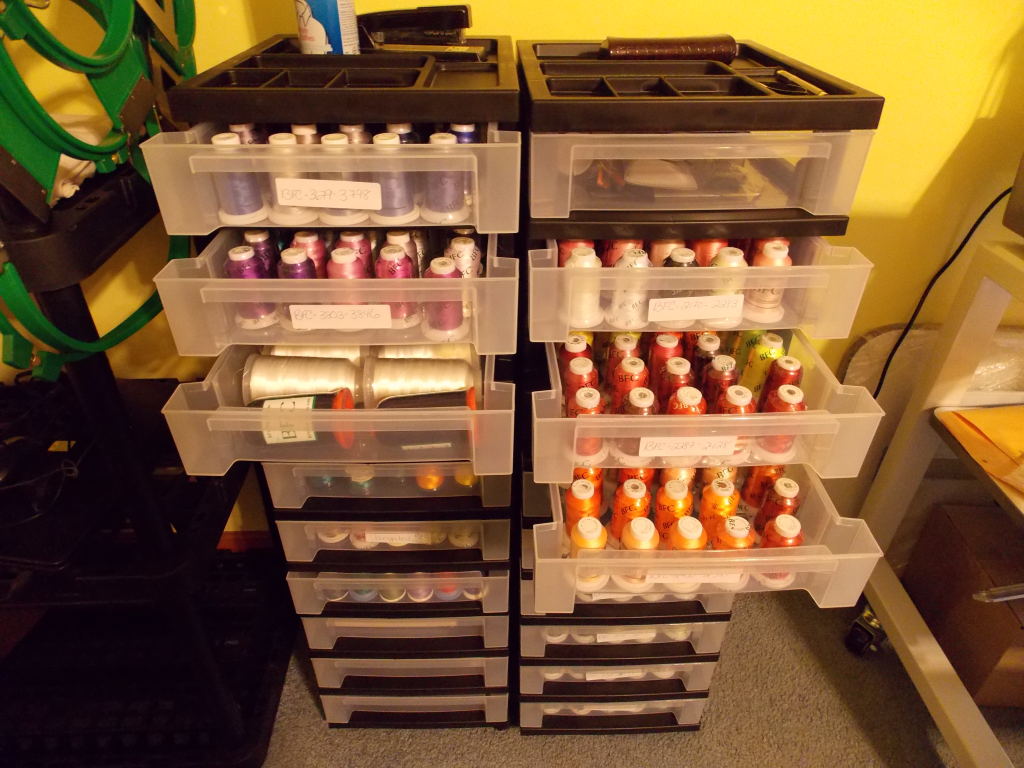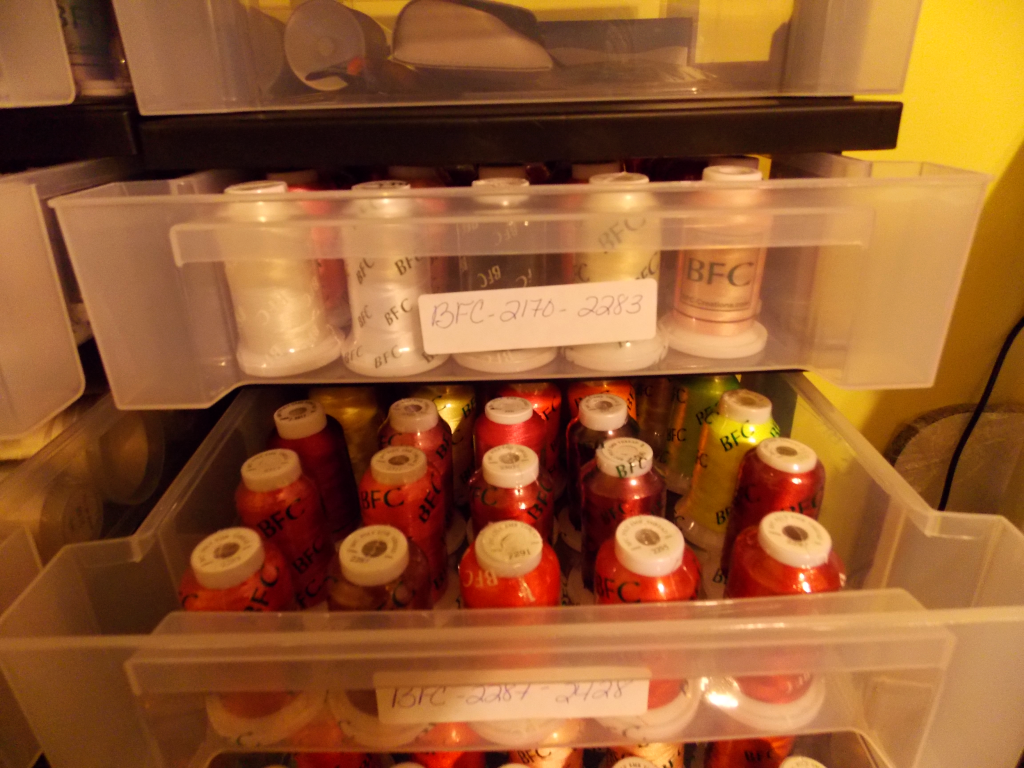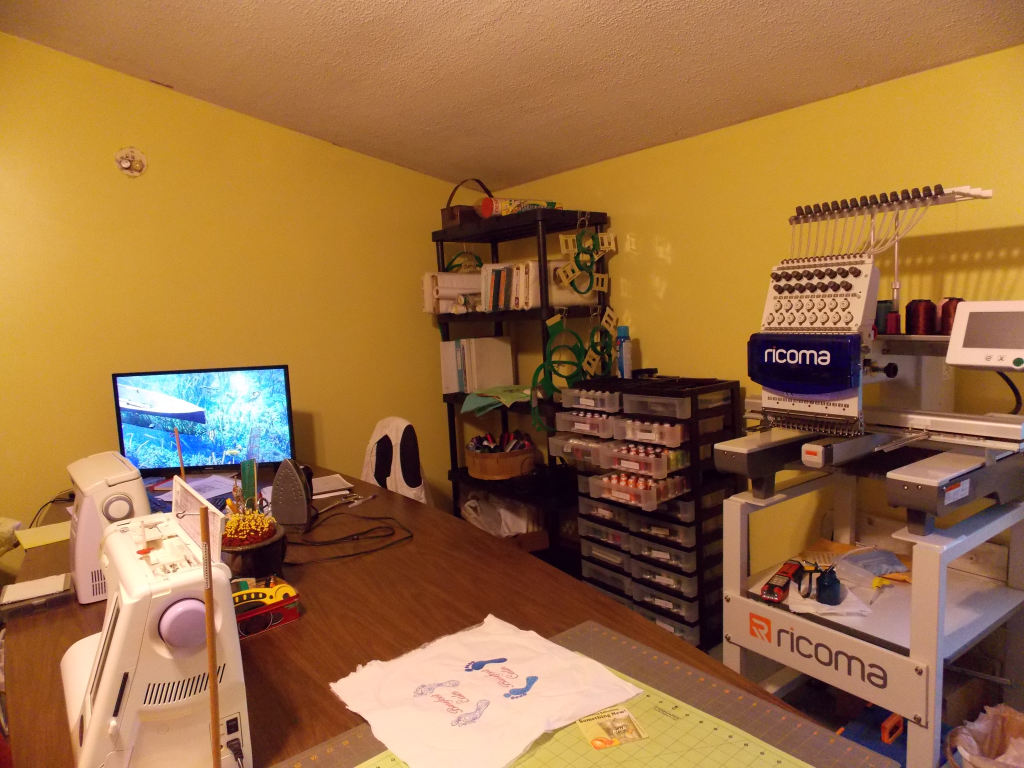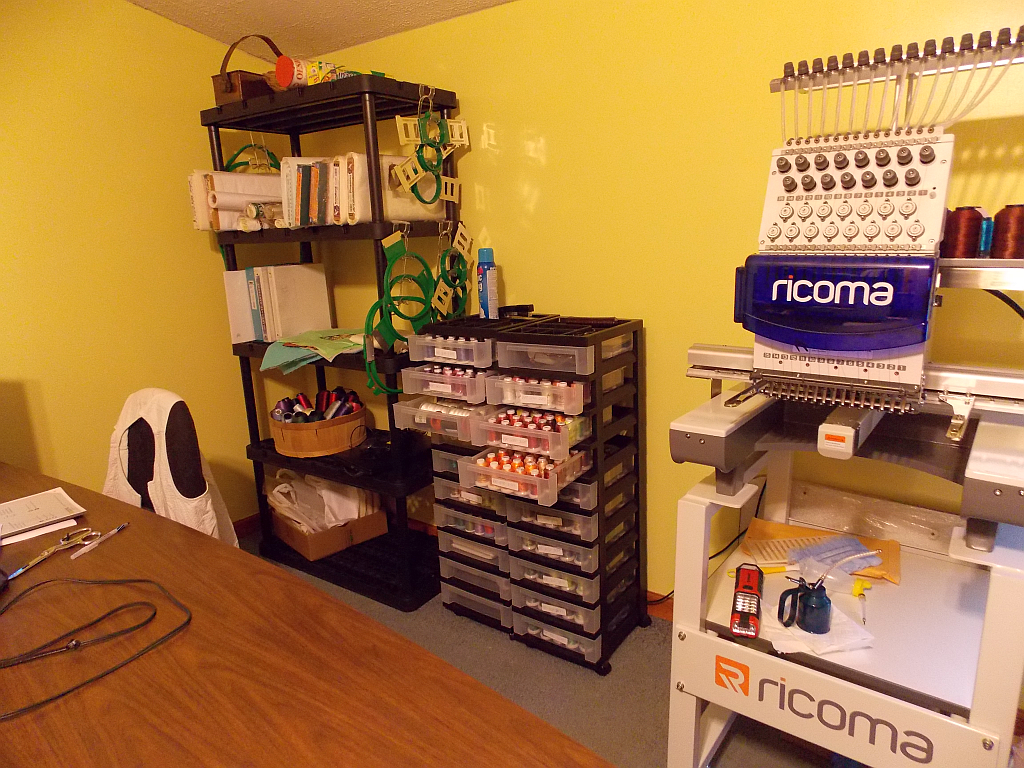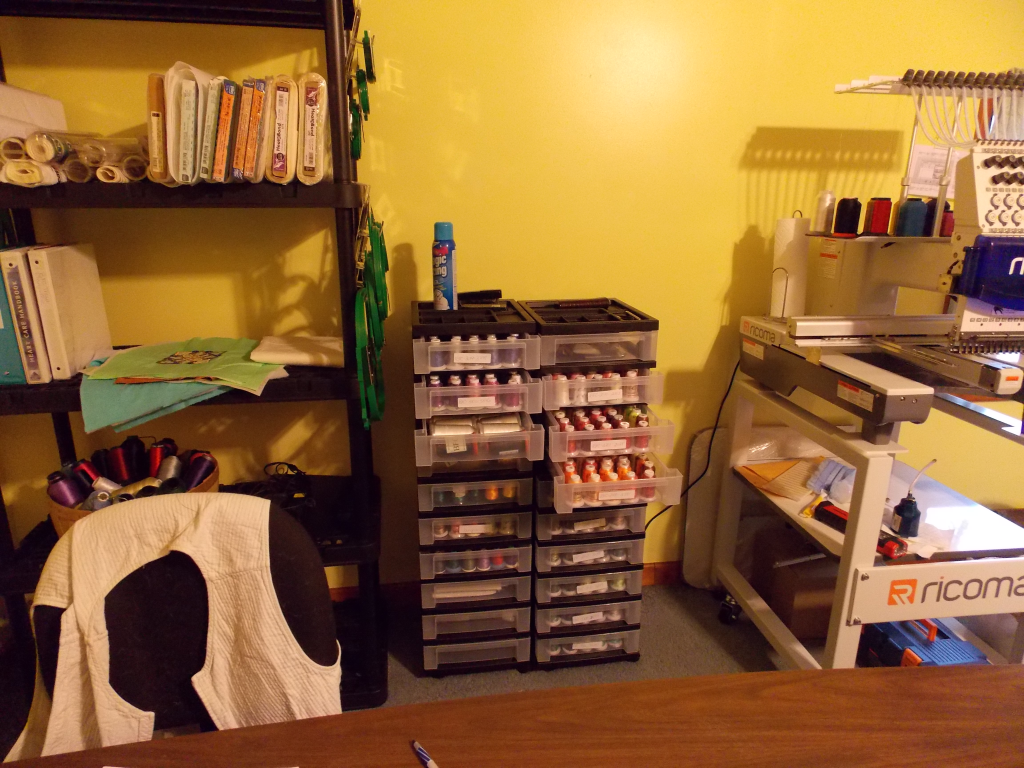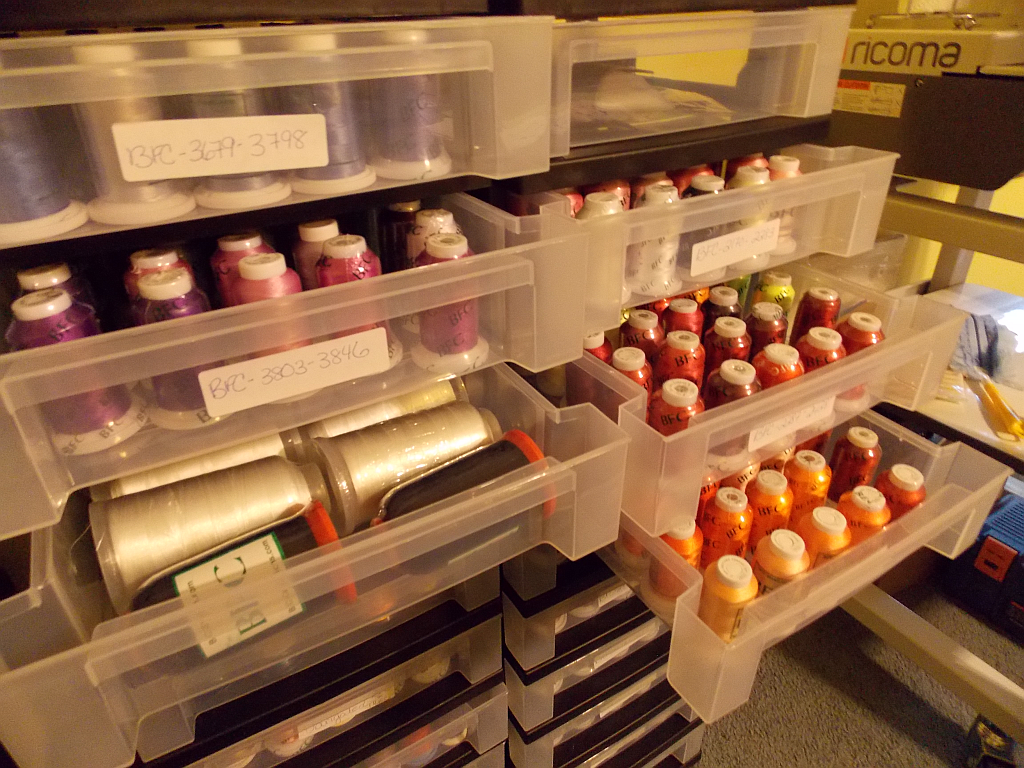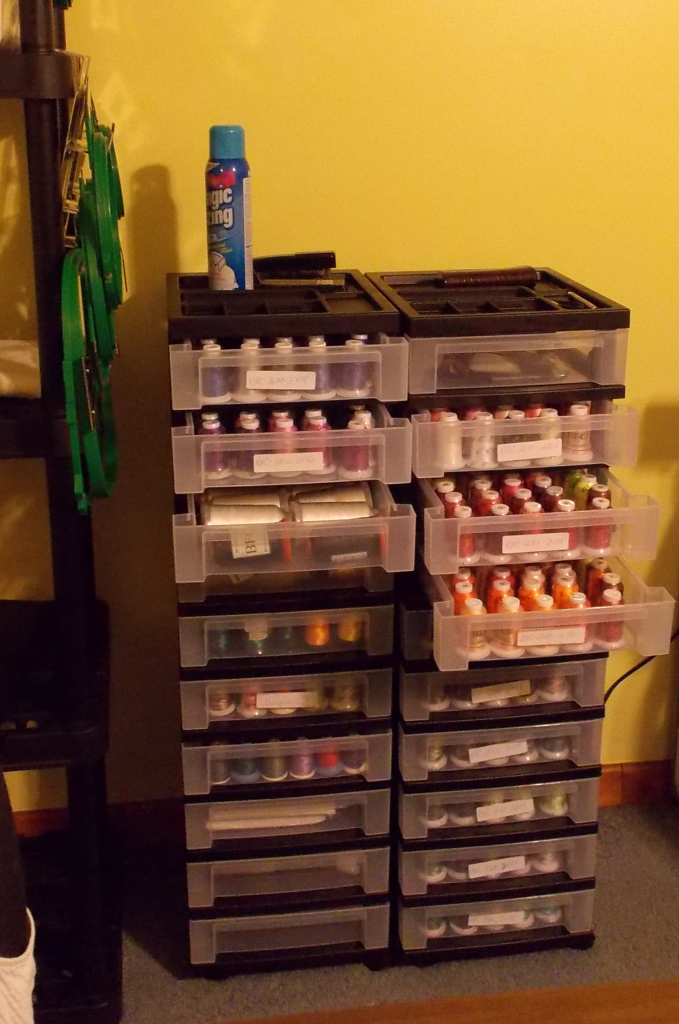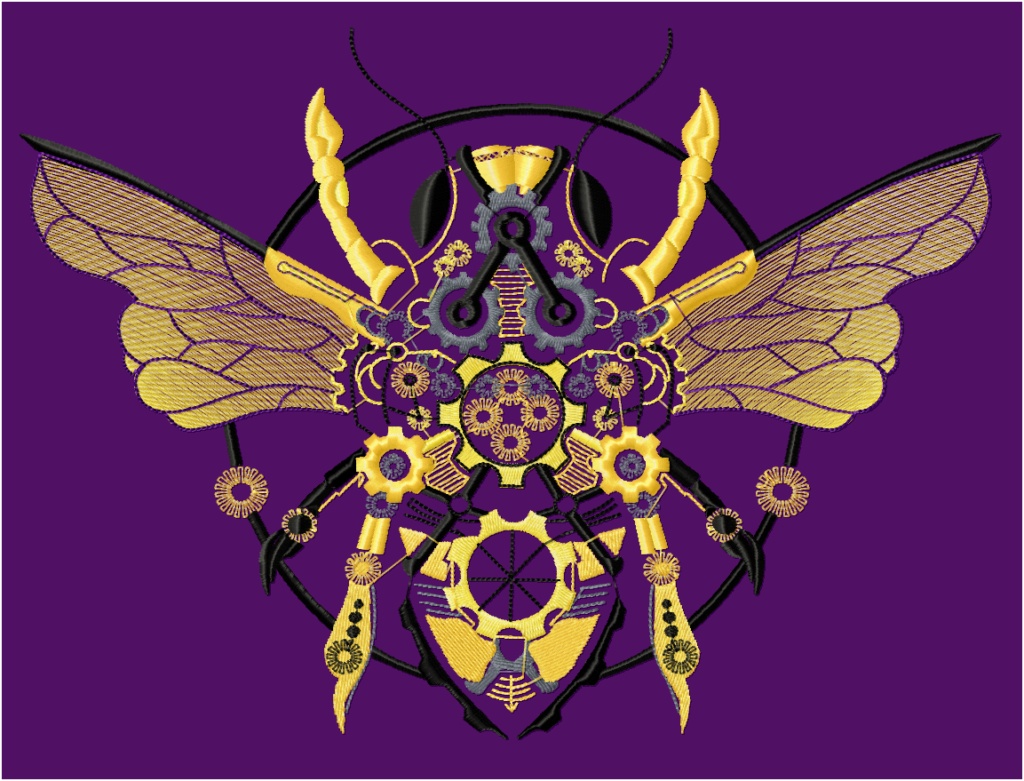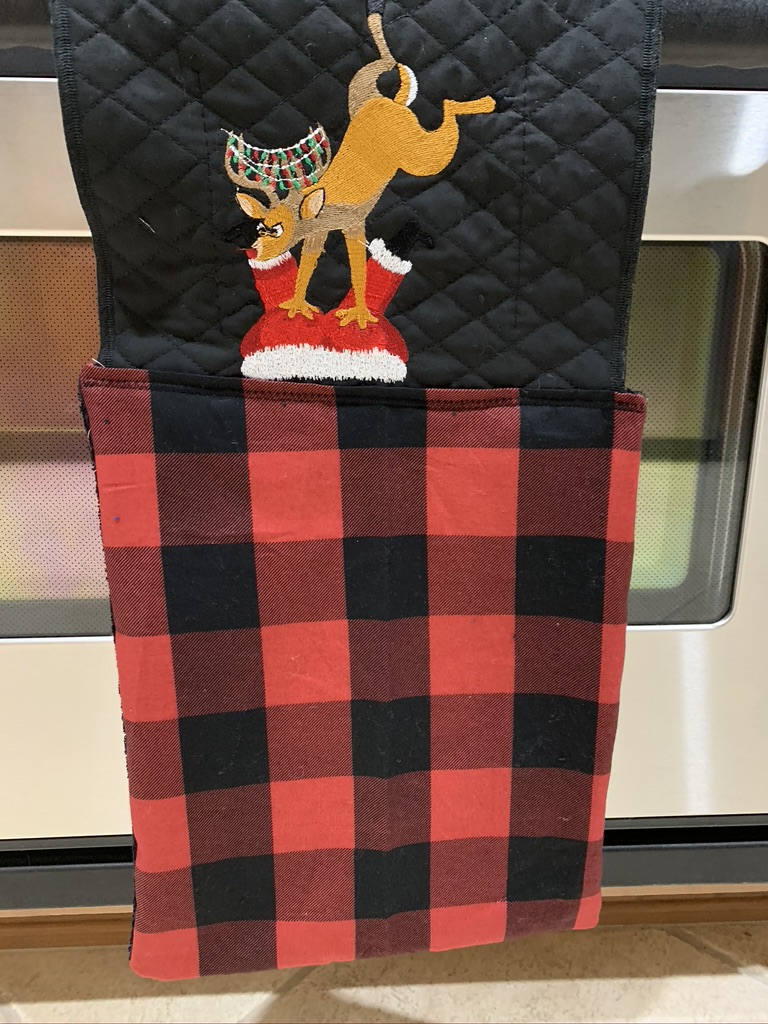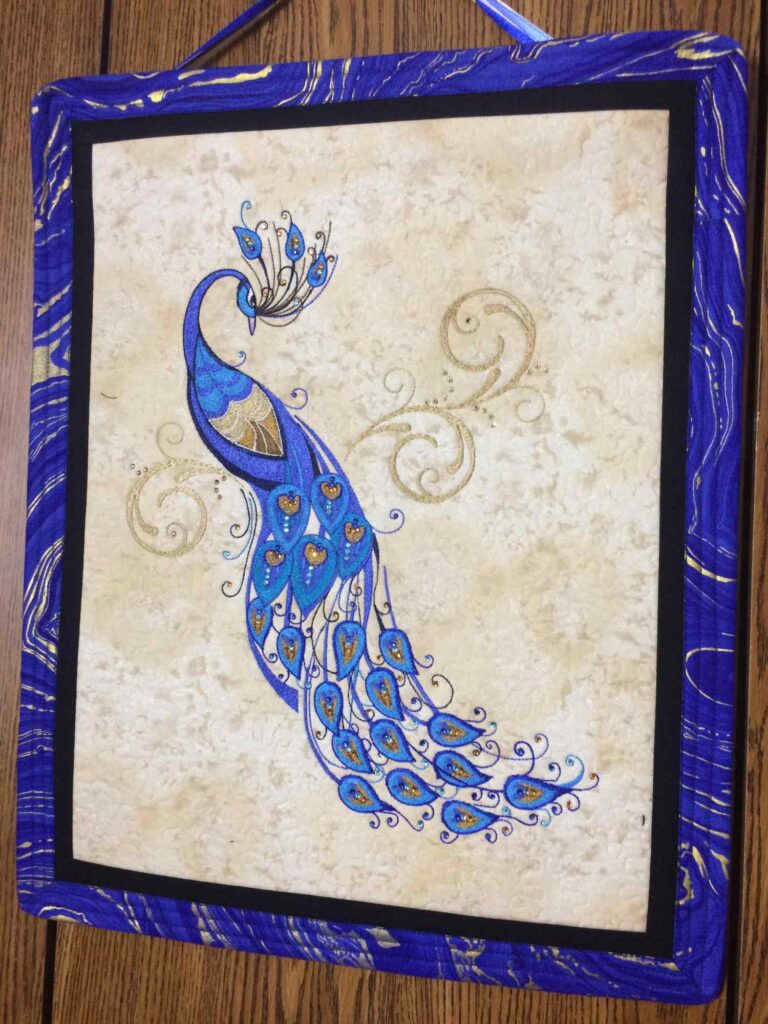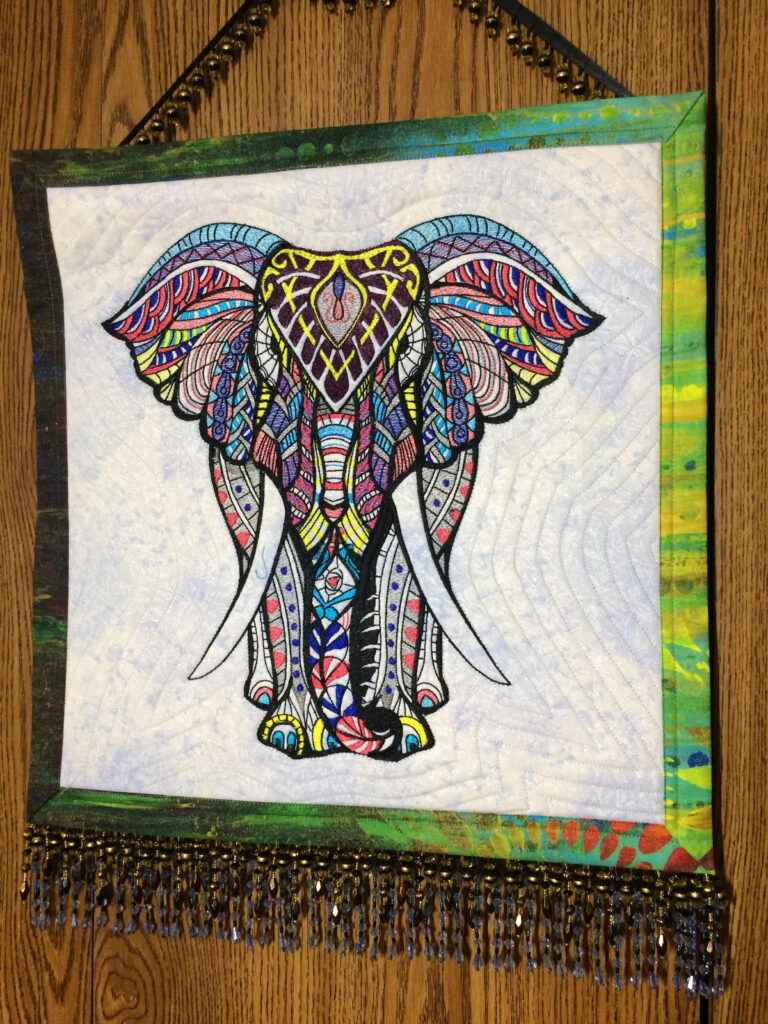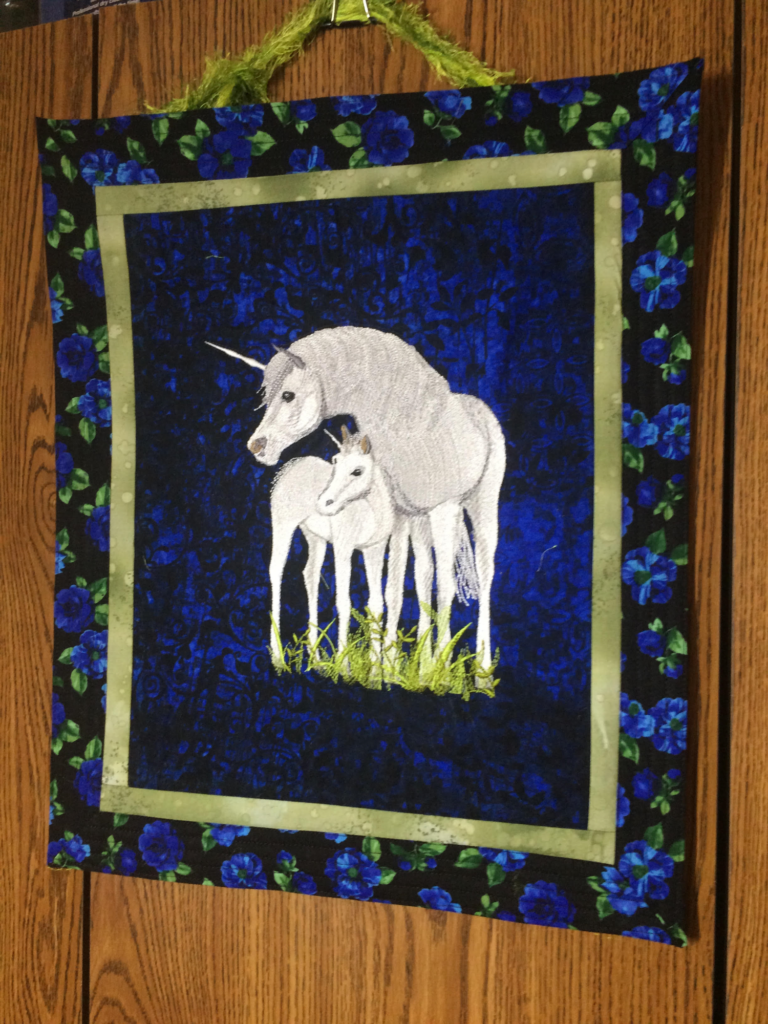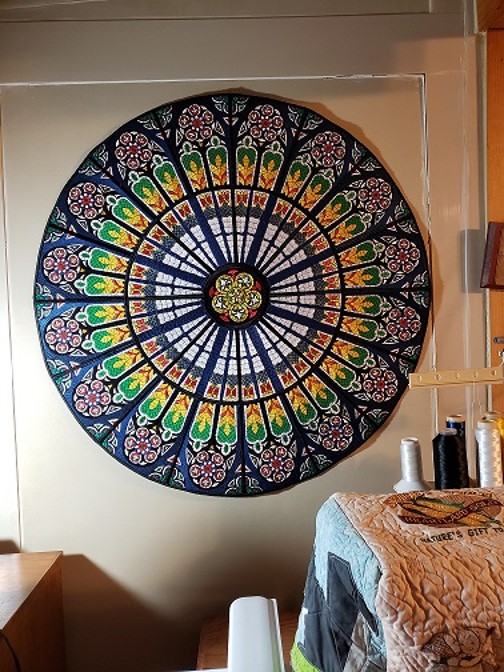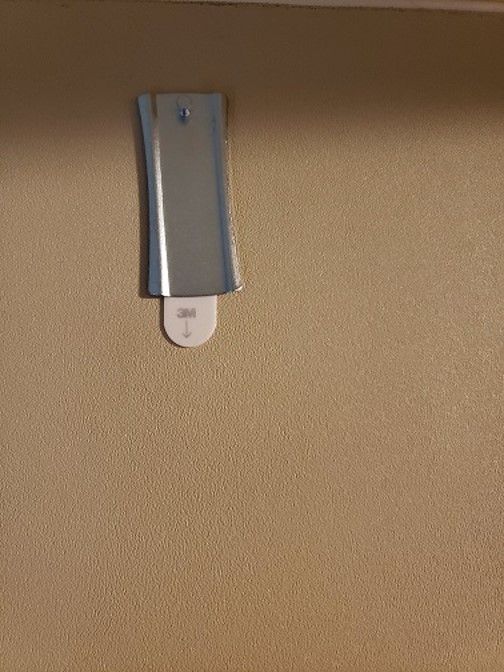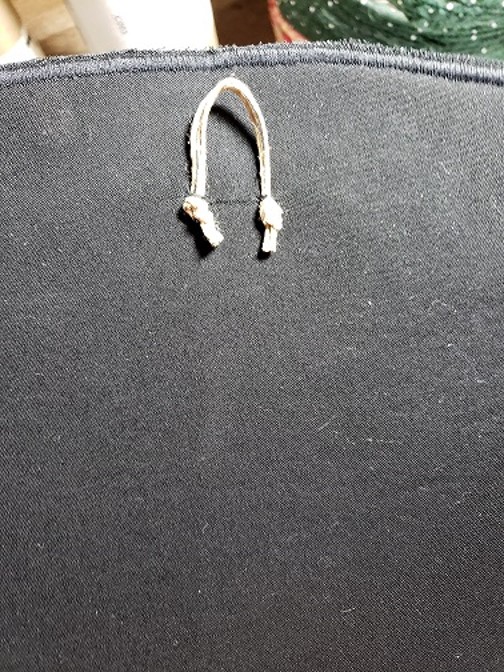Beth has been so kind and generous to write out directions on how she makes such beautiful finished embroideries that she displays on easels. You can see some of them here.
Thank you so much Beth! Download in PDF form: BethPictureFraming
Procedure steps and tips for creating embroidery pictures using Pellon 71F ultra firm one sided fusible and Pellon 926 extra firm non-fusible stabilizers.
FINISHING EMBROIDERED PICTURES
It is best to use either an 80/12 or 90/14 topsitich needle.
Basic directions
1. In software combine embroidery design and border (frame) design. It does not matter which of the two designs is chosen first.
a) If more than one embroidery design is to be combined before adding the frame design, it is helpful to sequence the order of stitching in the software but moving forward and back through color stops in the embroidery machine to achieve the correct stitching order works as well.
b) It will be necessary to move forward and back through color stops to stitch the frame for the embroidery picture.
c) Edit the size and dimensions of embroidery design and border/frame design independently as necessary before joining them. Once combined as a new design, the dimensions can be adjusted further as desired.
2. Hoop one layer of water- soluble nonwoven fabric- like stabilizer.
a) The best success stitching on fusible pellon is achieved by opening the bottom hoop enough that the stabilizer can be hooped smoothly without pulling it at all. Just smooth it by hand before tightening the frame. The stabilizer should be straight in the hoop, not pulled “tight as a drum,” however, tighten the hoop frame as much as possible. Pulling at the
stabilizer to smooth it after the hoop is tightened only serves to make it crooked. The stabilizer may seem to be too loose, but it will work better stitching on pellon.
3. Stitch the first color stop, used for the border, for the placement of the fabric fused to pellon. a) Cut the pellon, front and back fabrics at least 1.25 inches bigger that the dimensions of the finished border. This will allow a little more than ½ inch to hold on to while trimming the outside away. More allowance may be preferred.
b) Pellon is not 100% uniform. It does have a little loft. This is not usually a big problem. Just be aware that as the design is stitched the pellon will often flex in the hoop. It is a good thing to have the stabilizer a little loose and not stretched tightly in the hoop, especially with densely stitched designs. Ugly creases will be avoided. Let the pellon become wonky. The design has
not been ruined. The action of additional stitching will often smooth everything out. Attaching the back will also help flatten everything. In any case the picture will press flat when completed.
c) Lightly fuse the fabric to pellon. Works better with dense stitching.
d) It is better to use fusible pellon for both the front and back fabrics if the designs are large or
when a very firm picture is preferred. Attaching the back using non-fusible works well for small designs. Quilt blocks using trapunto or quilting stitches look good using non-fusible pellon on the front and fusible on the back. With non-fusible the fabric may noticeably “float” around
stitched designs. Experience and every design will dictate pellon choices.
4. Center the fabric fused pellon in the placement stitching. Stitch the second color stop to tack it down to the stabilizer.
5. Move to the embroidery design and complete the embroidery. Remember that it is better to allow the complete design to stitch without interference. It will probably be wonky, but not to worry. After the stabilizer is washed away and the picture dries, it will iron flat.
6. After the embroidery is completed, remove the hoop from the machine. Turn the hoop over, center the back fabric over the placement stitching and secure it to the stabilizer with pins. If non-fusible pellon is used with the back fabric, it is helpful to pin the two together in the center for a smoother fit.
7. Return the hoop to the machine and stitch the border design color stops one and two to secure the back fabric.
8. Remove the hoop from the machine and on a flat surface trim away the excess fabric/pellon From the front and back.
a) Start with the back.
b) Very sturdy double curved applique scissors are extremely helpful. Pickle Pie Designs sells an excellent pair on their website www.picklepiedesigns .com.
c. Trim carefully as close to the stitching as possible. Avoid cutting the stitching or the stabilizer. If you do cut the stabilizer at bit, pin another piece of stabilizer over the cut to patch the area. The remaining color stops need something to stitch on.
9. Complete the remaining border design color stops.
10. Remove the beautiful, embroidered picture from the hoop. Place it in warm water to dissolve the washaway stabilizer and rinse the excess away. Stand the picture on edge (like in a dish drainer) to allow the water to drain. Do not worry if it is wonky but take care not to bend the wet pellon. After the picture is dry, steam iron it flat using a pressing cloth to avoid damaging the embroidery. Any noticeable wrinkles can also usually be ironed away.
Enjoy many pictures displayed on an easel. Another option is to tack one side of a small metal ring to the back and hang these pictures on the smallest wire “Command hooks”.
